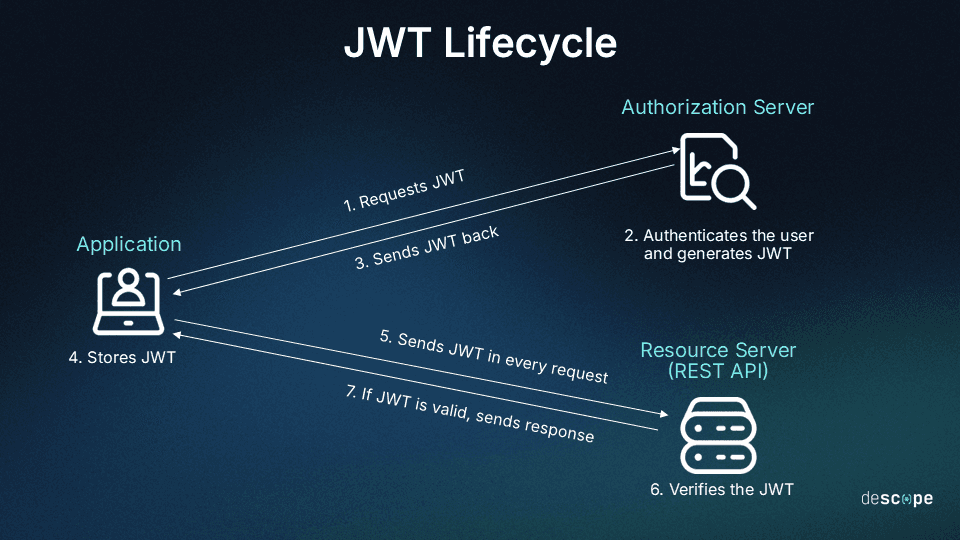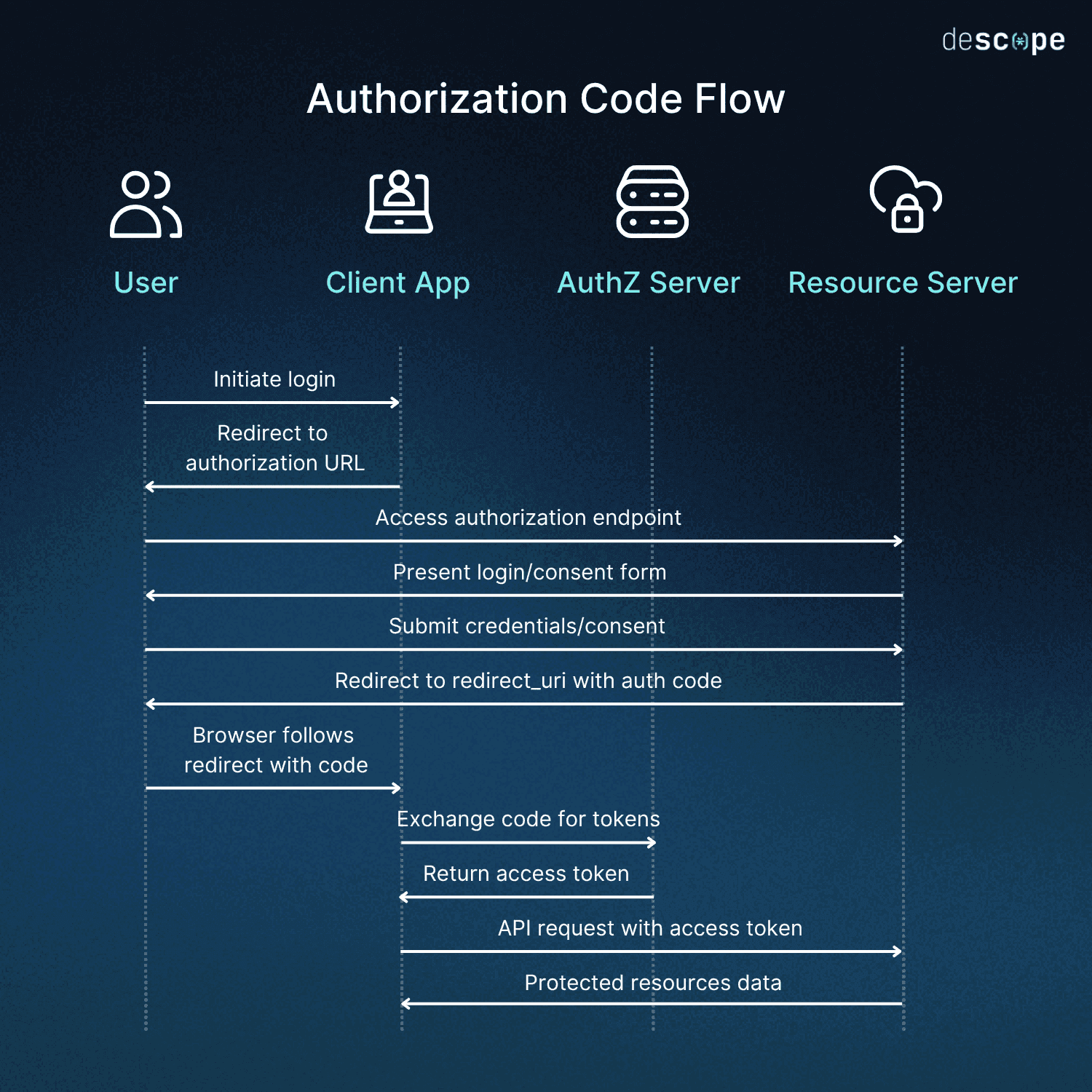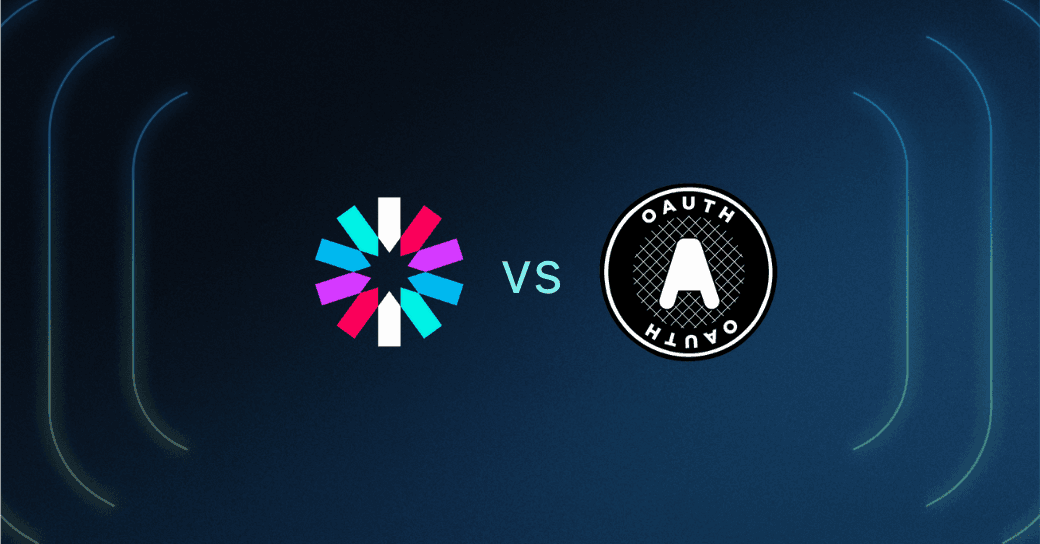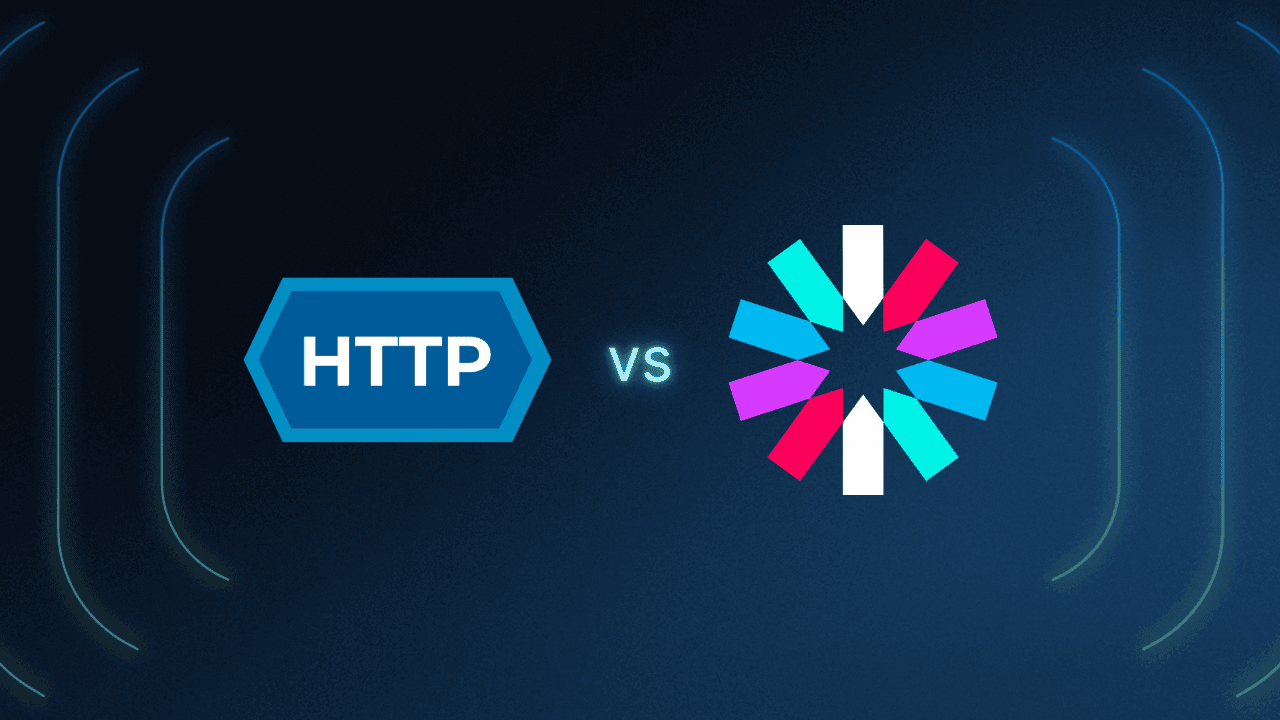Table of Contents
JWT vs. OAuth at a glance
When building secure web and mobile applications, authentication and authorization are two pillars you can’t ignore. Developers often encounter two common terms in this space: JSON Web Tokens (JWT) and Open Authorization (OAuth). While they’re sometimes mentioned in the same breath, they serve different purposes.
JWT is a token format, while OAuth is a framework for granting access without sharing passwords. They can be used separately or combined, depending on your goals.
This guide unpacks their key differences, common use cases, and how they can work together so you can choose the right approach for your application’s security and user experience.
JWT vs. OAuth at a glance
| JWT | OAuth |
|---|---|---|
What it is | A compact, URL-safe token format for securely transmitting claims between parties | A delegated authorization framework for granting controlled access without sharing credentials |
Primary purpose | Transport and verification of claims (identity, permissions, etc.) | Securely grant and manage access to resources or APIs |
Scope | Defines the structure and signing of the token | Defines the process for obtaining and using tokens |
Use cases | Stateless authentication, API access, ID tokens in OpenID Connect | Third-party API access, social login, multi-service access control |
Token format | Always a JWT | Can be JWT or opaque token |
State management | Typically stateless and self-contained | Can be stateless (JWT) or stateful (opaque token) |
Revocation | Harder to revoke before expiration without a denylist | Easier with token introspection and refresh tokens |
Common pairing | Often used for ID and access tokens in OAuth/OIDC flows | Often issues tokens in JWT format |
What is JWT?
JWTs use JavaScript Object Notation (JSON) to transmit claims securely between parties in a compact, URL-safe format. As an open standard, JWT is widely used for authentication and authorization because it can carry identity information and permissions in a self-contained way, removing the need for repeated database lookups.
A JWT consists of three parts:
Header: Identifies the token type and the signing algorithm (e.g., HS256, RS256).
Payload: Contains claims such as iss (issuer), sub (subject), exp (expiration), along with optional custom claims like user roles or permissions.
Signature: Created by combining the header and payload with a secret or private key to verify the token’s integrity and authenticity.
JWTs are often used for ID tokens in OpenID Connect (OIDC) and access tokens in OAuth-protected APIs. They’re lightweight and work well in stateless systems, but they can be harder to revoke before expiration, may become large if overloaded with claims, and are vulnerable if keys are weak, algorithms are misconfigured, or claims aren’t validated.
Read more: The Developer's Guide to JWT Storage

In a typical flow, a user logs in, the server verifies their credentials, issues a signed JWT, and the client stores it (often in an HTTP-only cookie). On future requests, the client sends the JWT so the server can verify its signature and claims before granting access.
Read more: Basic vs. JWT-Based Authentication: What’s the Difference?
What is OAuth?
OAuth is a delegated authorization framework that allows applications to obtain limited access to a user’s resources without sharing their credentials. Instead of handing over a password, users grant an application permission to act on their behalf by issuing access tokens. These tokens can be in various formats, including JWT.
OAuth relies on four key roles:
Resource owner: The user who grants permission for an application to access their data.
Client: The application requesting access to the protected resources.
Resource server: The server hosting the data or API being accessed.
Authorization server: The server that authenticates the user and issues access tokens.
Common OAuth flows include:
Authorization Code with PKCE: Recommended for browser-based and mobile apps, replacing the implicit flow for better security.
Client Credentials: Used for server-to-server communication without user interaction.
Device Code: Designed for browserless or input-constrained devices like smart TVs, allowing the user to authorize access on a separate device.
Implicit: Now deprecated in favor of more secure alternatives like Authorization Code with PKCE.
A familiar example is when a project management app connects to a user’s cloud storage service, such as Google Drive or Dropbox, to access files on their behalf without the user sharing their password. OAuth handles the secure permission grant and token exchange that makes this possible.

OAuth’s benefits include flexibility, fine-grained access control through scopes, and the ability to revoke or refresh tokens as needed. However, improper implementation can lead to issues like token theft or redirect manipulation, which can be mitigated with best practices such as strict redirect URI validation, short-lived access tokens, secure storage, and multi-factor authentication (MFA).
Read more: Access Token vs Refresh Token: A Breakdown
OAuth vs. JWT comparison
While JWT and OAuth are often mentioned together, they serve different purposes. JWT is a token format, while OAuth is a framework for delegated authorization. In practice, OAuth can use JWTs as access or ID tokens, but JWTs can also be used outside of OAuth.
Key differences:
Purpose: JWT defines how to structure and sign tokens that carry claims. OAuth defines how applications can obtain and use access tokens to act on behalf of a user or service.
Use case: JWTs are used to securely transmit claims, often for authentication or authorization. OAuth is used to grant controlled access to resources without sharing passwords.
Relationship: OAuth can issue tokens in JWT format, but JWT itself is not an alternative to OAuth.
State management: JWTs are typically self-contained and stateless. OAuth can be implemented with either self-contained tokens (JWT) or stateful, opaque tokens.
Revocation: JWTs are harder to revoke mid-lifecycle unless short expirations or deny lists are used. OAuth with opaque tokens can support real-time revocation via token introspection.
In short, JWT is the envelope that can carry information, and OAuth is the process for securely granting and managing access. Many modern systems use them together—for example, OAuth 2.0 with OIDC often issues ID and access tokens as JWTs.
Can you use JWT and OAuth together?
JWT and OAuth are not mutually exclusive—in fact, they are often used together. OAuth 2.0 defines how an application obtains access tokens, and those tokens are frequently formatted as JWTs. For example, in an OAuth flow with OIDC, the authorization server might issue an ID token (always a JWT in OIDC) and an access token (often a JWT) to the client.
Using them together combines the strengths of both: OAuth’s secure, delegated access model and JWT’s compact, self-contained structure. However, this also means you need to consider the security requirements of each. JWTs should have short expiration times, strong signing keys, and validated claims, while OAuth deployments should enforce strict redirect URI checks, scope-based access control, and secure token storage.
It’s also worth noting that JWTs can be used without OAuth, and OAuth does not require JWTs—opaque tokens are a common alternative.
When to use JWT, OAuth, or both
Choosing between JWT, OAuth, or both depends on your application’s needs.
When to use JWT:
You need a lightweight, self-contained token format that can be validated without a database lookup.
Your application benefits from stateless authentication.
You can accept limited mid-lifecycle revocation and use short-lived tokens with rotation.
When to use OAuth:
You need delegated access to APIs without sharing passwords.
Your application requires fine-grained access control using scopes.
You want the ability to revoke and refresh tokens easily.
You’re enabling social login or multi-service access (typically via OAuth + OpenID Connect).
When to use both:
You want OAuth’s secure access delegation combined with JWT’s portability and self-contained claims.
You’re implementing OpenID Connect, which uses OAuth 2.0 flows and issues JWT ID tokens.
You need scalable login and authorization flows across multiple applications or services.
Implement JWT and/or OAuth easily with Descope
JWT and OAuth each play an important role in modern application security. JWT provides a compact, verifiable way to transmit claims, while OAuth offers a framework for granting and managing access without exposing credentials. They’re powerful on their own, but even more effective when used together.
Implementing them correctly requires more than just choosing the right standard; it means configuring each step for security, scalability, and ease of use. Descope, a CIAM platform, makes this easier by providing no-code and low-code tools to build authentication and authorization flows that leverage JWT, OAuth, and other protocols securely.
With Descope, you can deliver frictionless login experiences across all your apps in just a few lines of code. Sign up for a Free Forever account or book a demo with our experts.






